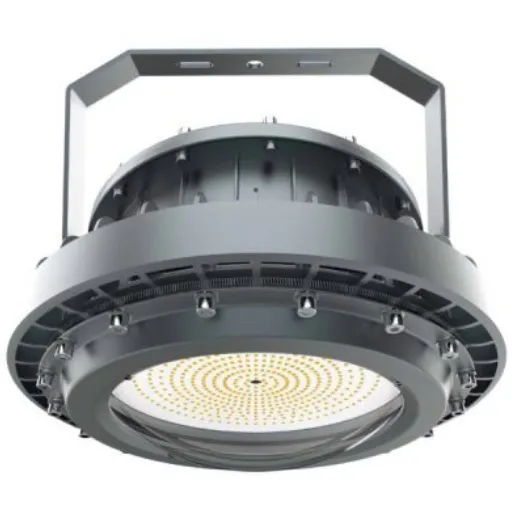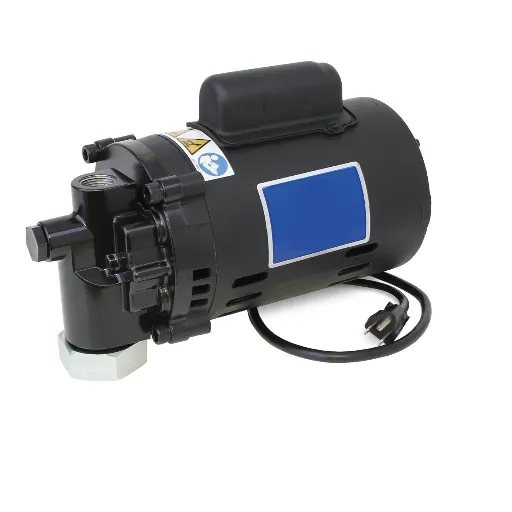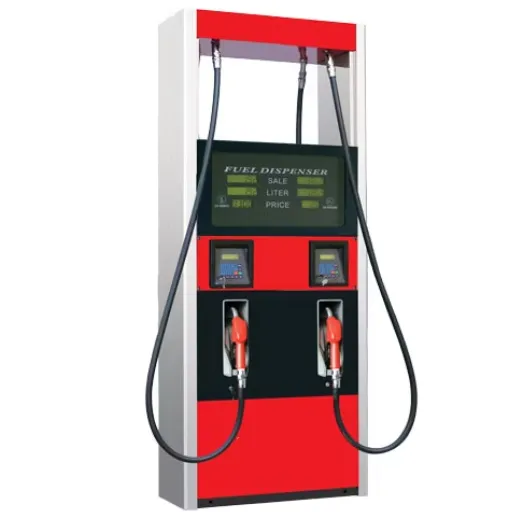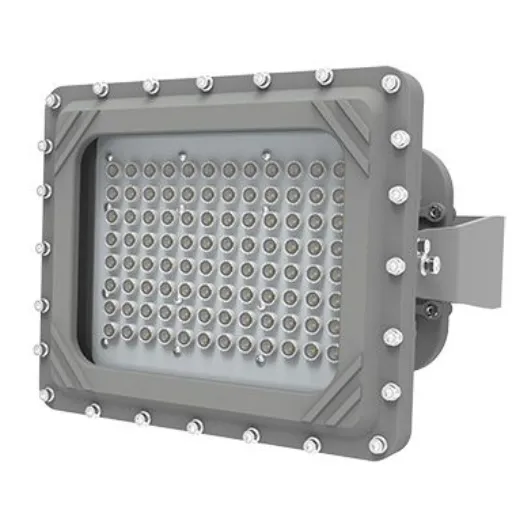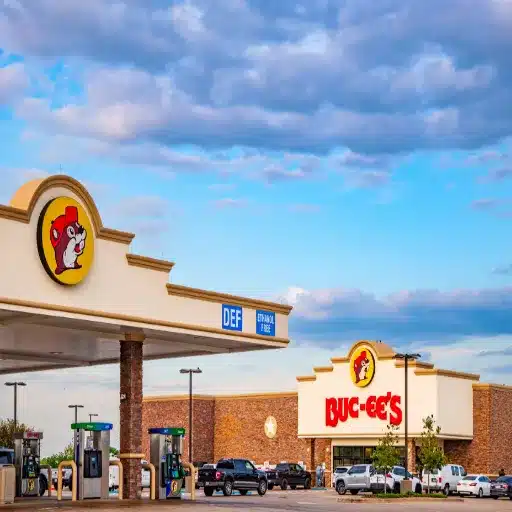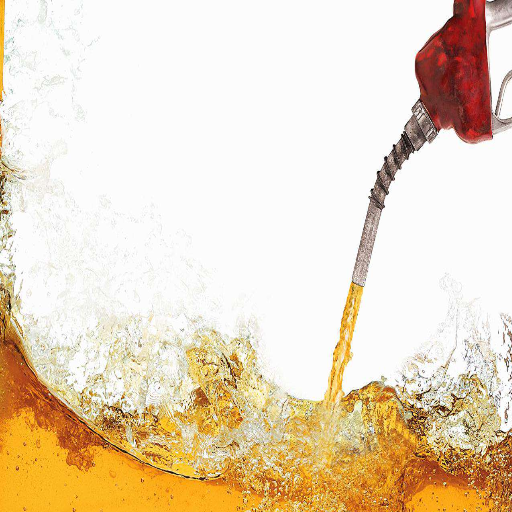Introduction to Fuel Nozzles
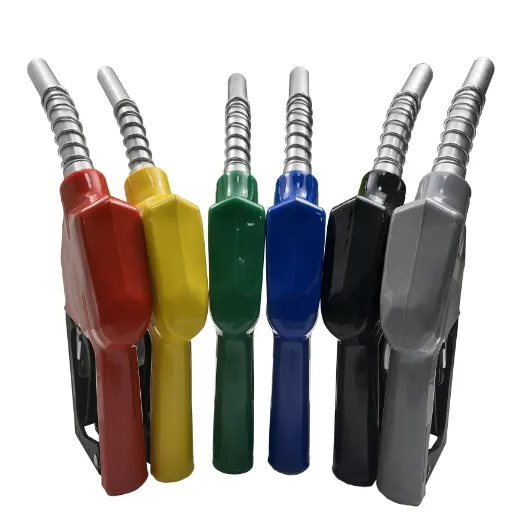
Fuel nozzles for dispensing fuel are an indispensable component of fueling systems. These particular devices place fuel into a vehicle safely and efficiently. Diesel and gas nozzles are endowed with various peculiarities to prevent any kind of misfueling. Usually, diesel nozzles are quite large so as not to fit into the smaller filler necks of gasoline vehicles. This is purposely done so as to avoid accidental damage to the engine by the wrong choice of fuel. Another design mechanism usually included in these nozzles is the automatic shut-off valve, which prevents overflows during filling and contributes to the safety and convenience of the driver. As already mentioned, knowing these basics helps you fuel correctly, avoiding the veneering of damage.
What is a Fuel Nozzle?
A fuel nozzle is important to have to permit the transfer of fuel from the dispenser to the vehicle or equipment. A fuel nozzle is meant to provide all the features to ensure efficient, safe, effortless, and precise refueling. This spurs them in different types: manual and automatic, depending on their applications for gasoline, diesel fuel, and alternative fuel such as bioethanol, before compressed natural gas (CNG).
Modern fuel nozzles have the latest designs so that their functionalities can be enhanced. Automatic shut-off systems are incorporated in most of the fuel nozzles so that when the tank gets full, no more fuel can pour out from the emptying end, so spills are avoided, eliminating another safety hazard. Some fuel nozzles also use the vapor recovery system to reduce dangerous emissions during the refueling process.
9-60 GPMFlow rate range for fuel nozzles
9-12 GPMTypical retail station flow rate
The flow rate for fuel nozzles generally runs from 9 to 60 gallons per minute (GPM), depending on their use. Retail stations often operate with a flow rate of about 9 to 12 GPM, whereas industrial or bulk fuel operations demand very high flow rates. The materials that go into the nozzles are also selected carefully: aluminum and stainless steel are preferred because of their durability and corrosion resistance in corrosive chemical or weather conditions.
For fuel nozzles to work properly, it is important that it is compatible with the fuel under consideration and the dispenser system for that fuel. In most cases, the diameter of gasoline nozzles is smaller than that of diesel ones, so that the filler necks of the different vehicles can provide some means to prevent cross-contamination. In this way, together with the continuing changes in norms and regulations for safety and environmental protection, fuel nozzles become the ultimate working tools in the fueling process worldwide.
Types of Fuel Nozzles
Fuel nozzles exist in different types, designs, and sizes depending on fueling needs and systems. Below are the primary types of fuel nozzles and their characteristics:
1. Automatic Fuel Nozzles
Automatic fuel nozzles with an autofill safety system automatically stop fuel flowing once the tank is full. Hence, there is no overfilling or spillage of any kind. Due to this, they are very much used at service stations throughout the world. Many of these nozzles use sensors that detect the back pressure when the tank becomes full, ensuring precise fuel quantities and minimizing wastage. Automatic fuel nozzles are often used for gasoline and diesel and come in different sizes depending on the kind of fuel.
2. Manual Nozzles
While the automatic actuation of fuel nozzles entails the arrest of fuel flow at the awkward moment, the manual type requires that the operator hold the flow until one is finished fueling. The manual nozzles are very simple indeed. They remain in use mainly in industrial-type applications, agricultural applications, or some other applications, over-the-counter method, wherein simplicity and durability are of concern. Usually, manual nozzles are built rugged to withstand tough wear and tear.
3. High-Flow Nozzles
High-flow nozzles are intended for large fueling service for trucks, buses, and heavy-duty machines. High-flow systems force fuel into these vehicles at rates many times that of a standard nozzle and thus reduce the excessive downtime taken during refueling. These high-flow systems are also usually mated to hoses of larger diameters to match the increased throughput rate.
4. Vapor Recovery Nozzles
Vapor recovery fuel nozzles are designed to mitigate the release of fuel vapors into the atmosphere during refueling, thus addressing environmental concerns. The vapors are drawn from the space between the vehicle’s tank and the nozzle and channeled back into the storage tanks or recovery systems to decrease air pollution and aid air quality. These nozzles mark the last link in an environmentally compliant fueling system, especially in environmentally regime areas.
5. Aviation Fuel Nozzles
Aviation fuel nozzles meet specific requirements for the fueling of aircraft. Due to their nature, aviation fueling must be very high flow yet precise and safe. Commonly shared features to aid this include pressure control, filtration systems, and anti-static devices.
6. Specialty Nozzles for Alternative Fuels
Given the introduction of alternative energy sources, specialized fuel dispensing nozzles for biofuels, CNG (compressed natural gas), and hydrogen have been created. These nozzles allow their particular fuels to enter through them and hence employ cutting-edge sealing mechanisms and materials capable of withstanding temperature requirements specific to alternative energy applications.
These fuel dispensing nozzles serve different functions, thus expressing the diversity and creativity of the fueling world in delivering an efficient process to the global populace while also keeping safety and environmental compliance in mind.
Importance of Choosing the Right Nozzle
Choosing the right fuel dispensing nozzle ensures operational safety and efficiency and keeps environmental compliance in place. The nozzle designed for a particular kind of fuel prevents leakage, spillage, and accidents, which affect the operational safety and health environment. Statistics show that improper fueling equipment is a major cause of fuel contamination; contamination often entails expensive maintenance and downtime.
95%Fuel vapors captured by advanced vapor recovery systems
Another vital focus of the modern fuel industry is emission control, wherein the advanced nozzle with vapor recovery systems reduces the number of harmful pollutants. Recent literature states that the facilities with such systems can capture around 95% of the short-term fuel vapors, thus greatly improving air quality. Besides, the ergonomically designed nozzles help the users with better handling and reduce manual error, thus paving the way for safer and efficient fueling operations.
The purchase of nozzles made of durable materials meant to withstand extreme temperatures and chemical exposure assures prolonged operational life while also translating to cost savings. These considerations further demonstrate that fuel nozzles play a very critical role, not only in operational excellence but also in providing the softer undertones in the discourse on sustainability and environmental considerations.
Understanding Diesel Fuel Nozzles
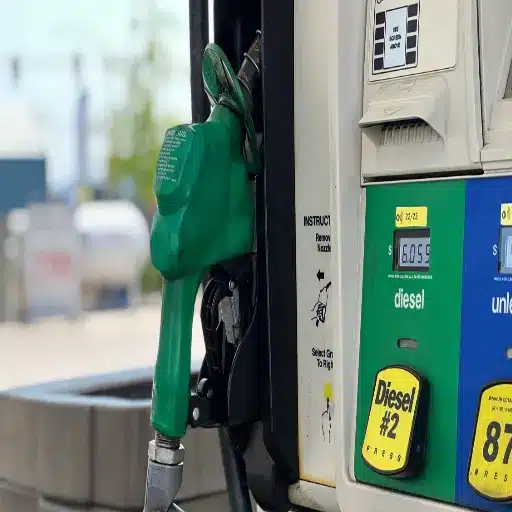
Diesel fuel nozzles are among the fundamental components in the delivery system of diesel engines. These control the fuel injection of particular quantities into the combustion chamber for maximum performance and engine efficiency. With a high degree of accuracy, modern-day diesel fuel nozzles minimize wastage of fuel and thereby reduce emissions from fuel combustion. Their longevity and welder performance are greatly considered with reference to ensuring reliability in diesel-powered machines and vehicles.
Characteristics of Diesel Fuel Nozzles
Diesel fuel nozzles, by their very nature, are uniquely The precision engineering renders the transfer of fuel into the combustion chamber an accurate operation. It is due to the injection pressure, spray pattern, and material composition that characterize these nozzles. Modern diesel fuel nozzles can operate at very high pressures, usually well above 30,000 PSI, which allows nitrogen atomization of fuel for efficient combustion and reduced emissions.
30,000+ PSIOperating pressure of modern diesel fuel nozzles
The pattern in which fuel is sprayed into the combustion chamber is designed to optimize mixing with air. Different engines require different spray patterns: multi-hole, cone-shaped, or fan-shaped sprays, depending on their performance requirements and emission standards.
Modern fuel injectors operate in a wide range of temperature and pressure conditions, and hence, must be designed with utmost precision and reliability. In general, such advanced nozzles are manufactured from high-strength alloy materials offering good resistance to wear, heat, and corrosion, thereby offering a long life under stringent service conditions. Also, manufacturers embed precision filtration to avoid any debris or contaminants clogging the nozzle, thereby ensuring uninterrupted performance and long life for the entire fuel injection system. This explains how design and engineering innovations are essential in responding to the ever-growing demand for fuel efficiency and environmental sustainability.
Size and Design Differences
The sizes and designs of fuel injectors vary greatly depending on the engine requirements they serve. For instance, incorporating injectors with larger capacities is preferable with modern high-performance engines to deliver the quantity of fuel required efficiently, whereas smaller engines make use of smaller injectors designed very precisely for proper atomization of fuel for increased efficiency.
Some injectors are designed with multi-hole nozzles to attain superior spray patterns that facilitate the proper mixing of fuel with air for combustion efficiency and emission reduction. Generally, such injectors have between 4 and 10 holes, depending on their use.
4-10Number of holes in multi-hole injectors
2,000 barMaximum pressure in advanced direct injection systems
Designs account for materials and coatings used to enhance durability and resistance to high pressure and extreme thermal variations. Increasingly, ultrasonic technology is employed inside injector tips to maintain consistency of spray. Ultra-advanced direct injection systems would be capable of exceeding 2,000 bar pressures for fuel injection for the attainment of power and reduction of particulate emissions in modern engine concepts.
20%Fuel economy improvement in recent vehicles with precision control
Industry data analysis hints toward extremely tight automotive fuel injectors being tight in tolerances within micrometers for precision control. Depending on the precision control, in a few recent vehicles of 20% fuel economy has been improved over the much older systems. This really delineates the significance of accurate size and design innovation toward improvements in performance and environmental sustainability.
Common Uses of Diesel Fuel Nozzles
Diesel fuel nozzles are crucial in the industrial and commercial sectors for precise and efficient fuel delivery. These nozzles find their major application in heavy machinery and transport LNG trucks for amber construction and other roadworks, ensuring the right combustion and engine performance. For example, advanced fuel injectors in modern diesel-engine trucks can improve fuel efficiency by 20% over older counterparts, thereby also reducing the cost of operations and emissions.
- Heavy machinery and transport trucks for construction and roadworks
- Agricultural tractors and farm implements for plowing, harvesting, and laborious tasks
- Marine engines for cargo vessels and fishing boats requiring continuous operation
- Power generation in diesel generators for hospitals and remote areas
- Industrial equipment such as compressors, pumps, and mining machinery
Tractors and other farm implements require diesel fuel nozzles. These nozzles were created with the high stresses of farm machinery in mind, providing steady power for plowing, harvesting, and other laborious tasks. They also find use on marine engines, comprising cargo vessels and fishing boats, where long-haul and continuous operation demand an efficient and reliable fuel delivery system.
Another important area of use is power generation. Widely used in industry, hospitals, and remote areas to provide a reliable power supply, diesel generators fitted with high-precision nozzles can provide power at high efficiency, especially in areas where the electrical grid is poorly developed.
Finally, diesel fuel nozzles play an essential role in industrial equipment, such as compressors, pumps, and mining machinery, where harsh environments demand the provision of reliable durability and precise fuel injection. These advanced nozzle designs do promote enhancements to productivity while saving excess the goal being to provide for the sustainability of various fields of operations.
Exploring Gasoline Nozzles
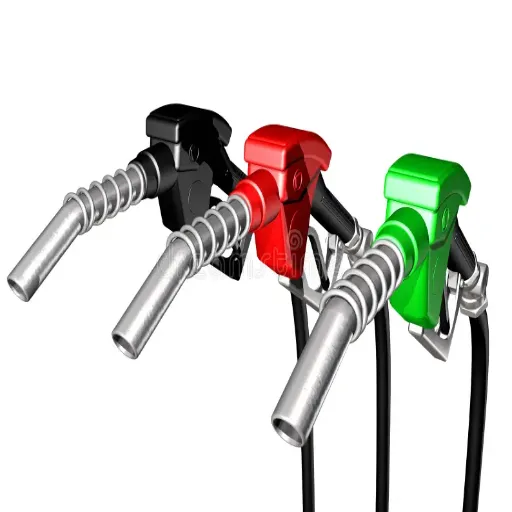
Gasoline nozzles have become an essential component of fuel delivery systems and are used mainly at fuel stations for the safe and efficient transfer of gasoline into vehicle tanks. These nozzles are outfitted with automatic shut-off devices to avoid overflow and allow for safe operation. Weight concentration is less so as to ease handling, and durable materials are chosen for their ability to sustain heavy use. The operation of gasoline nozzles is crucial to the accurate dispensing of fuel and the ease of convenience to the customer.
Characteristics of Gasoline Nozzles
Gasoline nozzles are loaded with many critical attributes to make refueling efficient, safe, and durable. A foremost characteristic is the automatic shut-off system, which prevents gasoline spillage by cutting off fuel flow automatically when the vehicle’s tank reaches its full capacity. These systems are based on pressure-sensing mechanisms to detect the tank-full situation.
Modern nozzles are usually crafted from aluminum or steel alloys of high quality for long-term corrosion and wear resistance. The designs are ergonomic for easy handling and reduced operator fatigue and come with rubberized grips coupled with swivel joints that allow flexibility during use. Gasoline nozzle flow rates usually range from 10 to 15 gallons per minute (GPM) for regular passenger vehicles, whereas commercial-grade nozzles are capable of flow rates of 40 GPM and above for bigger tanks.
10-15 GPMFlow rate for passenger vehicles
40+ GPMCommercial-grade nozzle flow rate
Furthermore, in an effort to decrease atmospheric pollution, many nozzles are being equipped with vapor recovery systems that absorb the gasoline vapors before they go into the atmosphere. These are common in locations where emission standards are very stringent. From a technological point of view, electronic systems for very precise metering and automatic interface with payment systems have been developed to make the fuelling process much easier. These developments guarantee consumer satisfaction with the gasoline nozzles regarding speed, safety, and environmental standards.
Size and Design Differences
There exist gasoline nozzles of various sizes and designs geared towards the fulfillment of differing vehicles and fueling systems. Standard nozzles for passenger cars would have a rather smaller diameter, approximately 0.87 inches (22 mm), so they may fit into modern vehicle fuel tanks equipped with vapor recovery systems. In contrast, nozzles for large vehicles such as trucks or buses or heavy equipment are made with wider diameters, sometimes bigger than an inch and a half (38 mm), allowing high flow rates so that the refueling time remains shorter.
0.87 inchesStandard passenger car nozzle diameter
1.5+ inchesHeavy equipment nozzle diameter
Nozzle design incorporates ergonomic principles that emphasize user safety. Many nozzles are built from lightweight aluminum and composite materials so as not to tire out operators during long periods of usage. These nozzles are also equipped with features like splash guards, automatic shut-off mechanisms, and angled spouts to reduce spillage while enhancing the maneuverability of the nozzle. Some nozzles can adjust flow rate so the user can select the rate of fuel dispensing depending on his or her immediate need, ranging from a slow trickle to a rapid flow.
95%Gasoline vapor reduction with green nozzles featuring vapor recovery
Beyond functionality, aesthetic and structural design considerations change alongside advancing technology and regional compliance standards. For example, green nozzles may include state-of-the-art vapor recovery methods that claim to capture and therefore reduce emissions by up to 95% of gasoline vapors. These size and design differences, taken together, ensure their applicability in a broad variety of fueling scenarios while putting forth the values of safety, efficiency, and the environment.
Common Uses of Gasoline Nozzles
Gasoline nozzles are important elements in a fuel flow system with different functions in varying applications. The most common use is refueling vehicles at gas stations, where fuel must be dealt with carefully and efficiently. The modern nozzle is equipped with an automatic shut-off mechanism to prevent fuel spillage and ensure safety for men during the manual operation of fuel dispensing.
- Vehicle refueling at gas stations
- Agricultural tractors and farming equipment
- Generators for backup power systems
- Emergency fuel transfer in remote settings
- Specialized equipment running on gasoline
In addition to refueling vehicles, gasoline nozzles are also employed for other applications, such as refueling agricultural tractors, generators, and other types of specialized equipment that run on gasoline. Industry data states that only the agricultural sector contributes a major share of the consumption of gasoline worldwide. This, to a large extent, highlights the need to have good fuel supply systems as a necessity for their continuous productivity.
There is an emergency fuel transfer performed through the portable-type nozzle, often in remote settings requiring a quick and reliable solution to refuel. With innovations in the form of lighter materials and ergonomic designs, the nozzles gained more user-friendliness as well as versatility. These developments point to the different fields in which gasoline nozzles operate and serve energy distribution, emphasizing safety, efficiency, and convenience.
Key Differences Between Diesel and Gas Nozzles
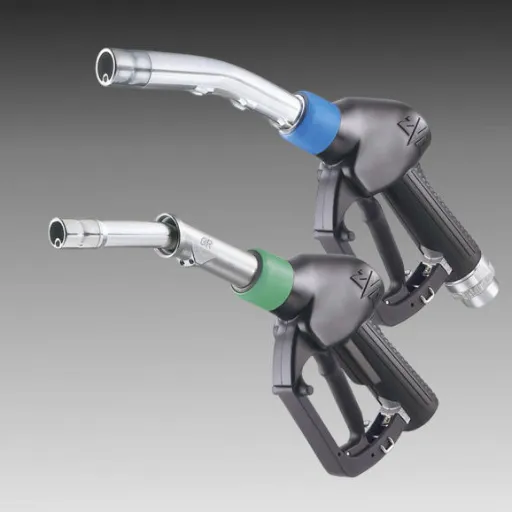
Understanding the critical differences ensures safe, efficient refueling and prevents costly mistakes
| Feature | Diesel Nozzles | Gas Nozzles | Purpose |
|---|---|---|---|
| Port Size | Bigger diameter | Smaller diameter | Prevent diesel nozzles from fitting into gasoline vehicle filler necks |
| Flow Rate | Higher flow rate | Lower flow rate | Match requirements of big diesel engines vs gasoline engines |
| Color Coding | Green or black | Red or yellow | Visual identification and distinction between fuel types |
| Material Compatibility | Diesel-compatible materials | Gasoline-compatible materials | Chemical compatibility and long-term durability |
| Pump Mechanism | Higher-pressure operation | Lower-pressure operation | Meet different engine demands and fuel delivery requirements |
Said differences become critical to being able to conduct the safe and efficient operation of tow vehicle fuel and equipment, reducing the possibility of an accidental human error.
Fuel Compatibility
Insertion of the wrong fuel- diesel in a petrol engine or petrol in a diesel engine -would surely lead to misfiring, clogging, and far-reaching engine damage. There are different designs of fuel systems, injection systems, and combustion processes for diesel engines and gasoline engines. The modern generation of vehicles is often equipped with certain conformity features that prevent fueling errors, such as nozzle design and labeling. Provided one really sticks to these instructions, the reins will give brief control to the vehicle in safety and efficiency. Always refer back to your vehicle’s owner manual or the label on your fuel cap in case of confusion.
Size and Fit
The first rule in size and fitting is to refer to the manufacturer’s specifications for your model. Fuel tanks and fueling systems are designed to exact dimensions and configuration, and that is why the use of the right fuel along with compatible equipment is so important. For instance, diesel nozzles are generally larger than petrol types as a way of reducing accidental mismatching. Never use a nozzle that cannot correspond with a cap or filler neck, as this usually results in spillage or damage. Also, check your vehicle manual or any trusted source online to make sure that your fuel type is compatible enough for your model in order to maintain your vehicle’s performance and safety at its peak.
Safety Features and Regulations
A modern fuel system usually includes safety features that prevent accidents and provide for safe fuel handling. For instance, most vehicles have fuel tank caps with locking mechanisms to reduce spillage and vapor emissions. In addition, nozzles are standardized by design to avoid cross-contamination of fuel types, with diesel nozzles usually being bigger than gasoline nozzles to sidestep filling errors.
Stringent regulatory bodies impose regulations on activities of fuel handling, storage, and distribution, to provide for consumer and environmental protection. According to regulations, fuel containers must be leak-proof, stations must comply with fire safety standards, and equipment must undergo inspection to verify its working condition. Moreover, fuel pumps often have an automatic shutoff feature that prevents spills from happening, thereby ensuring the safety of a vehicle during refueling. By following these standards and practices, one can ensure safer working conditions while minimizing their unwanted environmental impact, as implicated in fuel use.
Selecting the Right Nozzle for Your Needs
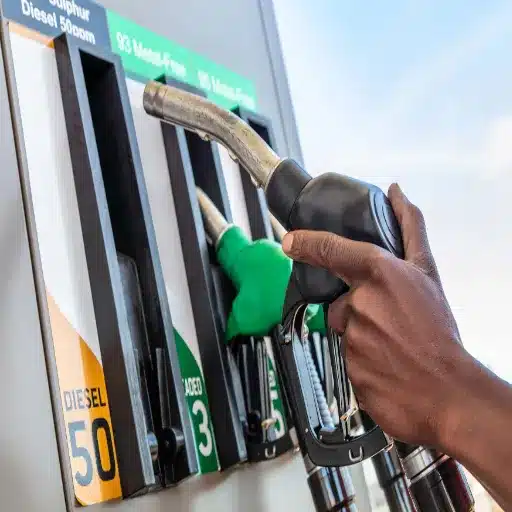
Choosing the right nozzle depends on the type of fuel being dispensed and its intended use. Usually, gasoline just requires a normal nozzle with an automatic shut-off feature. Diesel or high-flow fueling requirements should employ a nozzle designed for those purposes, and it must fit the dispenser system. Always verify the flow rate of the nozzle and its safety features to be sure it meets the needs. If in doubt, check the manufacturer’s instructions or product specifications to have a clearer picture before making a purchase.
Factors to Consider When Choosing
Essential Selection Criteria
- Check fuel type compatibility (gasoline, diesel, or alternative fuels)
- Verify flow rate requirements for your specific application
- Ensure the automatic shutoff feature for safety
- Select durable materials like stainless steel or corrosion-resistant aluminum
- Confirm nozzle size and dispenser compatibility
- Look for additional safety features like pressure-sensitive shutoff
- Fuel Type Compatibility: Check that the nozzle in question is compatible with the intended fuel type to be dispensed. This may be gasoline-type fuels, diesel-type fuel, or any other alternate fuel type. The misuse of a nozzle might lower efficiency; it might become a safety hazard, or could even destroy the equipment.
- Flow Rate: Choosing the right nozzle that fits your flow requirements can be quite an important decision. A slow flow rate would typically suffice for most standard vehicles, while the fast-flowing ones are often used for bigger and industrial equipment.
- Automatic Shutoff Feature: This function prevents overfilling and makes the entire fueling procedure safer. So, make sure that your nozzle has this feature, especially for most consumer or self-service applications.
- Durability and Material: Go for a nozzle made of a material that guarantees durability, like stainless steel or corrosion-resistant aluminum. It will work for longevity, especially for high-demand and harsh fuel conditions.
- Nozzle Size and Compatibility: Confirm the nozzle fits with the dispenser and the fuel tank opening so as to avoid leakage or improper use. See specifications for sizing.
- Safety Features: Check for distribution and nozzle safety features, including pressure-sensitive shutoff or anti-spill devices, which can prevent people from being hurt and spills.
You have thus considered all factors that are important to meet your operational requirements, homeland, enhance safety, and fuel processes efficiently.
Impact on Fuel Efficiency
Once they do so, the nozzle helps direct fuel accurately to the vehicle, increasing overall user efficiency of the entire process.
Environmental Considerations
A fueling nozzle that is appropriate will have a much lesser impact on the environment due to fuel spills, evaporation, and emissions. More modern nozzles with vapor recovery systems minimize the projections of these harmful fumes into the atmosphere, thus plausible air pollution. On the other hand, advanced designs of nozzles can also prevent overflowing, thus preventing the contamination of soils and water sources. Environmentally friendly fueling facilities would also enhance the probability of meeting regulatory requirements and make operations more sustainable while reducing their actual carbon footprint.
Best Practices for Safe Fueling
Pre-Fueling Checklist
- Turn off your engine and remove keys from ignition
- Check the fuel cap label to confirm the correct fuel type
- Inspect the nozzle for damage or leaks before use
- Ensure proper grounding to prevent static electricity
- Keep a fire extinguisher accessible in commercial settings
During Fueling
- Insert the nozzle fully into the fuel tank opening
- Select the correct fuel grade for your vehicle
- Hold the nozzle firmly and avoid forcing it if it doesn’t fit
- Stay alert and attend to the fueling process
- Stop immediately when the automatic shutoff activates
Post-Fueling Safety
- Wait for the fuel to stop flowing before removing the nozzle
- Replace the fuel cap securely
- Clean up any spills immediately
- Dispose of contaminated materials properly
- Report any equipment malfunctions to station personnel
Conclusion
The distinctions between diesel and gasoline nozzles represent crucial safety measures designed to protect both vehicles and the environment. From size differences that prevent cross-contamination to specialized materials that ensure durability and compatibility, every aspect of nozzle design serves a specific purpose in the fueling ecosystem.
By understanding these differences – including port sizes, flow rates, color coding, and material compatibility – drivers and operators can make informed decisions that protect their equipment, ensure optimal performance, and maintain safety standards. The automatic shut-off mechanisms, vapor recovery systems, and ergonomic designs of modern nozzles continue to evolve, reflecting the industry’s commitment to safety, efficiency, and environmental responsibility.
Whether you’re operating passenger vehicles, heavy machinery, or industrial equipment, selecting the appropriate nozzle type and following proper fueling procedures will help you avoid costly mistakes, reduce environmental impact, and ensure reliable operation. Remember to always consult your vehicle’s manual, pay attention to fuel cap labels, and never force a nozzle that doesn’t fit properly.
As fuel technology continues to advance with alternative fuels and improved safety features, staying informed about these developments will help you make the best choices for your specific fueling needs while contributing to a safer, more sustainable transportation infrastructure.
Reference Sources
“Automatic Vehicle Fueling System using PLC Controlled Robotic Arm”
Frequently Asked Questions (FAQs)
The Difference Between Diesel and Gas Pump Nozzles
Diesel-type pump nozzles are different from gasoline-type pump nozzles so that they prevent the driver from accidentally choosing the wrong fuel. Diesel nozzles tend to be larger and thicker, thus not allowing the insertion of a diesel nozzle into a gas tank. This difference helps to signal the correct choice when refueling a vehicle.
Will wrong fuel damage my gas car?
Yes, the wrong fuel will surely bring serious issues to your gas car. Filling your gas tank with diesel fuel could possibly lead to damage to the engine and the fuel system, which will come with very expensive repairs. Always ensure that the seedling for your vehicle uses the correct type of fuel.
How do I determine if my vehicle uses a manual fuel nozzle?
Depending on the gas nozzle in hand, that is why you have to squeeze the lever to allow the fuel flow. If your gas nozzle has a trigger action and does not close automatically, then it must be a manual fuel nozzle. Check your local gas station to see what type of nozzles are offered there, both for diesel and gasoline.
What should I do if I accidentally put diesel in my gas tank?
Never start the engine if you inadvertently put diesel in the gas tank. The moment you turn on the ignition, diesel will travel through various pipes, causing damage. In that case, an expert should be called to rectify the situation as the tank needs draining, and the whole fuel system must be cleaned to avoid further complications.
Are diesel nozzles and gasoline nozzles interchangeable?
Diesel nozzles and gasoline nozzles are not interchangeable because of their size and shape. Diesel nozzles are tailored to fit diesel vehicles only, while gas nozzles are intended for gasoline cars. Such an arrangement is contributory towards avoiding errors on the nozzle operator’s part, who must ensure the correct type of fuel is being supplied to each particular type of vehicle.
Are the flow rates different for diesel pumps when compared to gas pumps?
Yes, the diesel pumps often work at a different flow rate than the gas pumps. Diesel fuel is thick and heavy, and hence, these pumps are generally made to dispense fuel slowly so that the thick fluid appropriately flows safely into the vehicle’s tank.
Is AdBlue used with diesel fuel nozzles?
AdBlue is basically a fluid that is used in diesel engines to reduce emissions. The liquid is not dispensed by the same nozzle used for the diesel fuel. There are specific separate nozzles intended for AdBlue, mostly found at diesel fuel pumps in Europe and in some locations in the USA. It is always better to check and make sure you are using the correct nozzle so as not to cause contamination.
What are the benefits of having this fuel nozzle?
The benefits provided by this diesel fuel nozzle basically prevent accidental misfueling; in turn, misfueling will prevent your vehicle from getting the wrong type of fuel. Also, the diesel nozzle, due to some of its design characteristics, uses them in thick fluids to ensure efficiency with no spilling. This feature is of utmost importance, particularly in agriculture and related industries, where diesel is the commonly used fuel.

